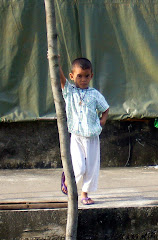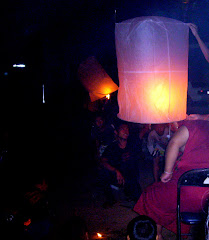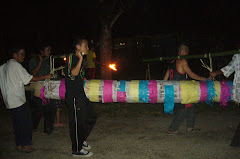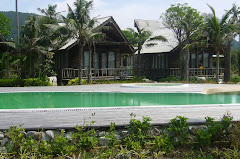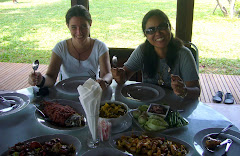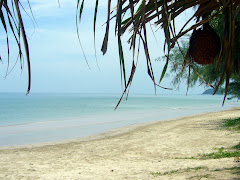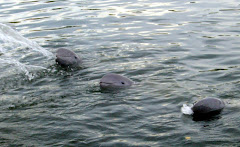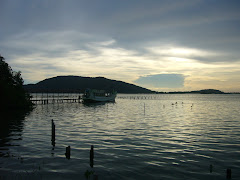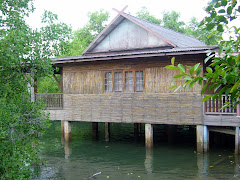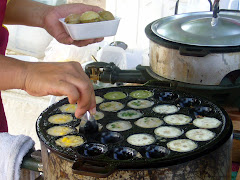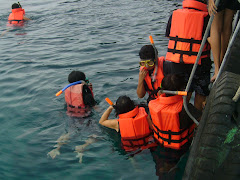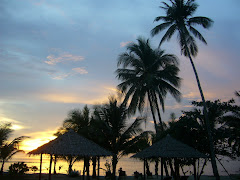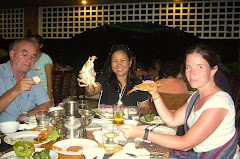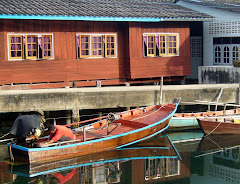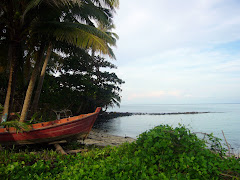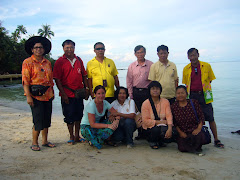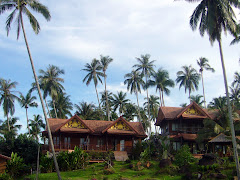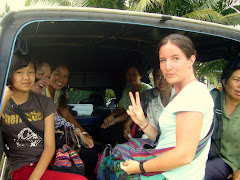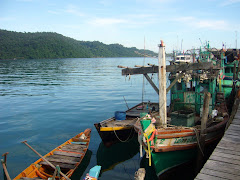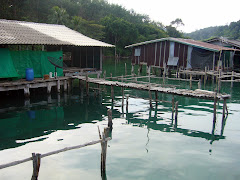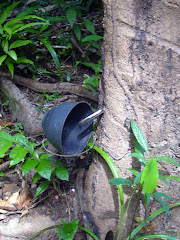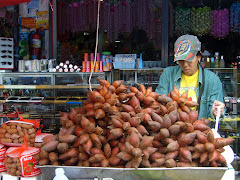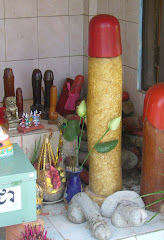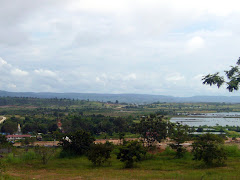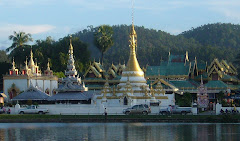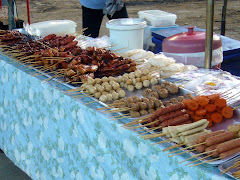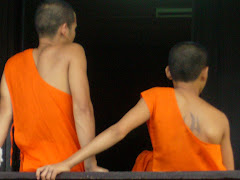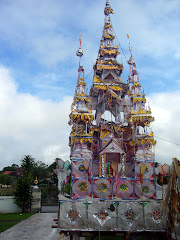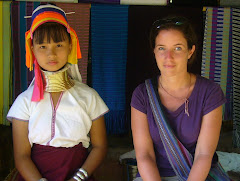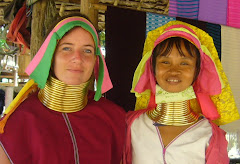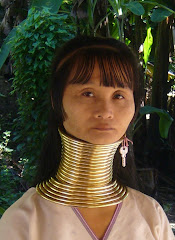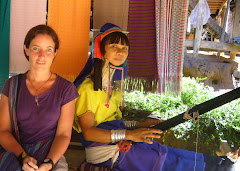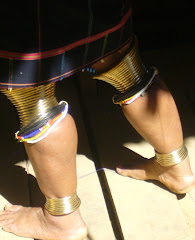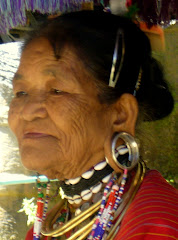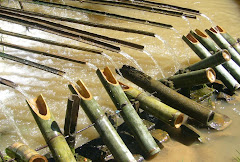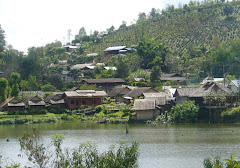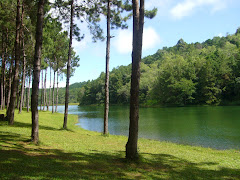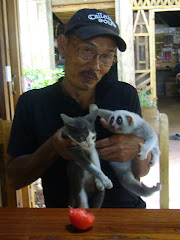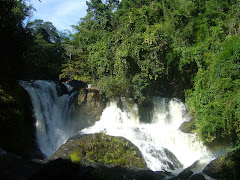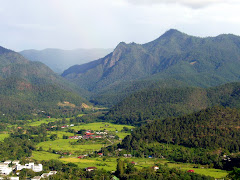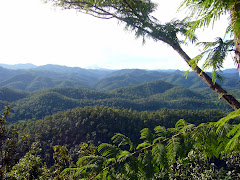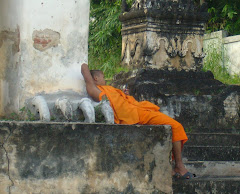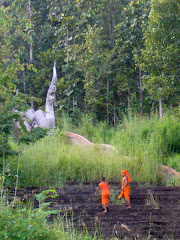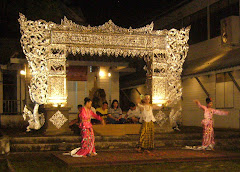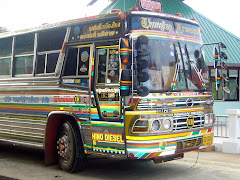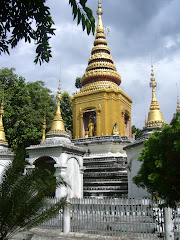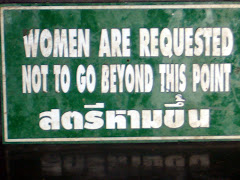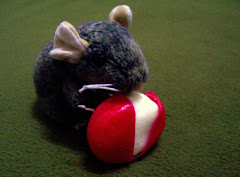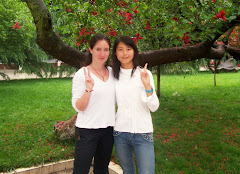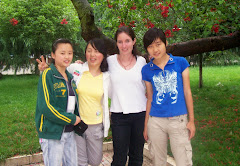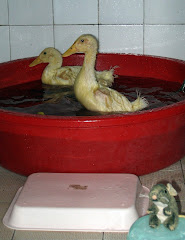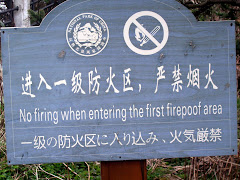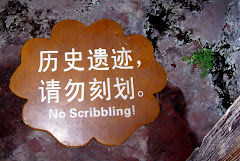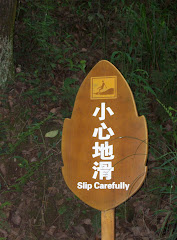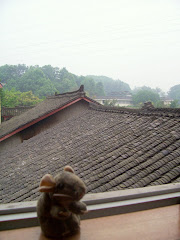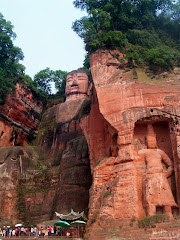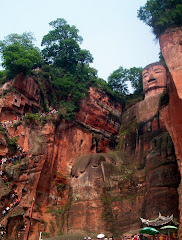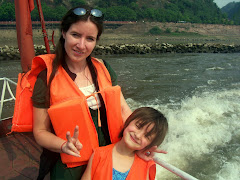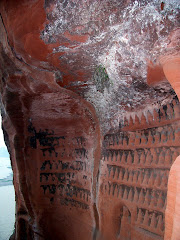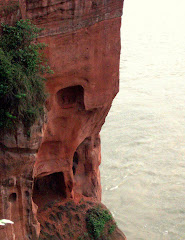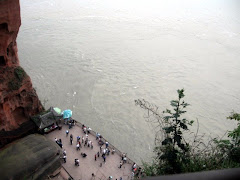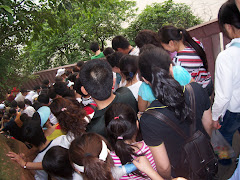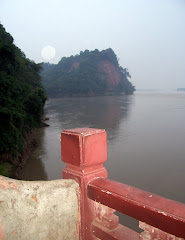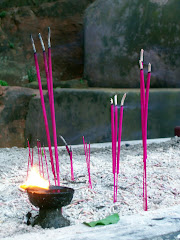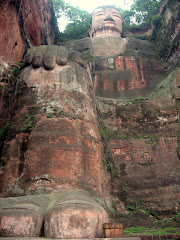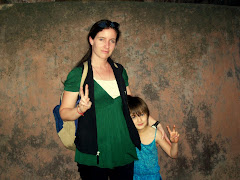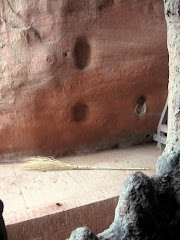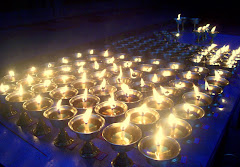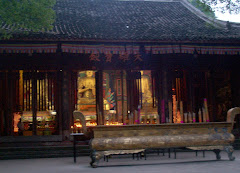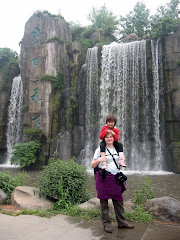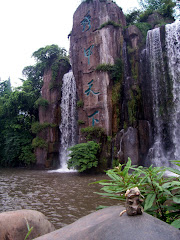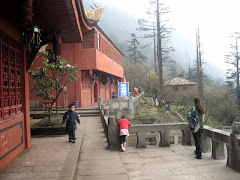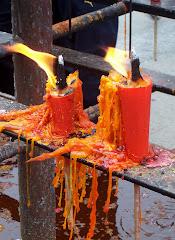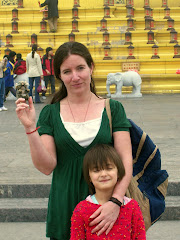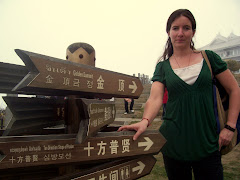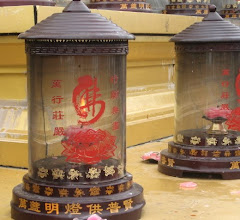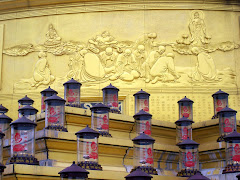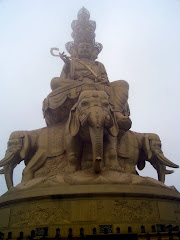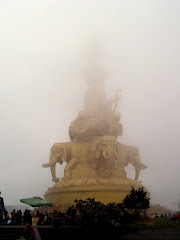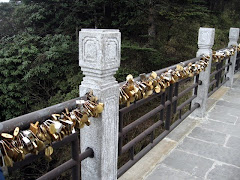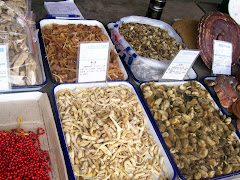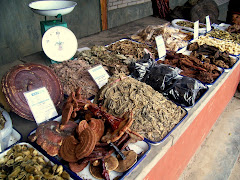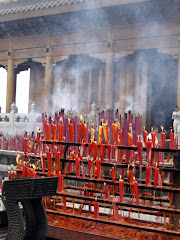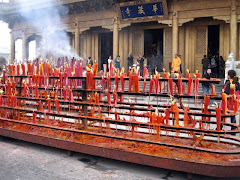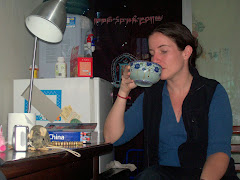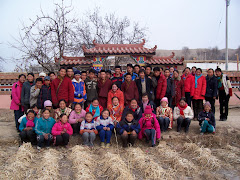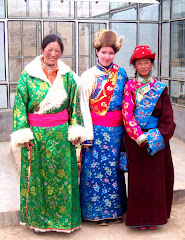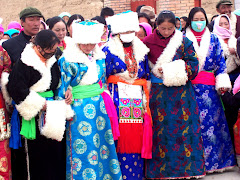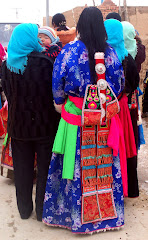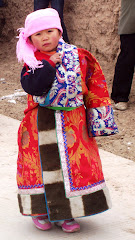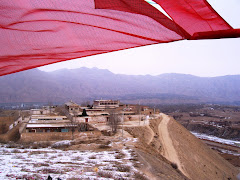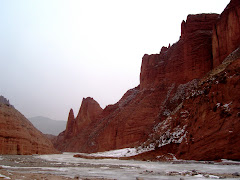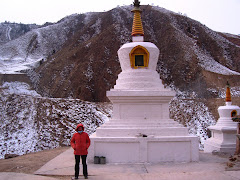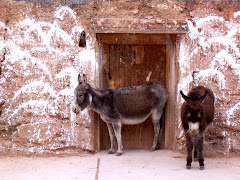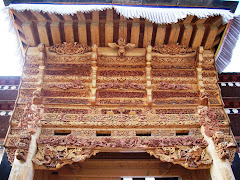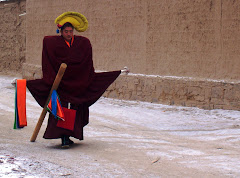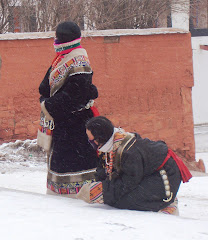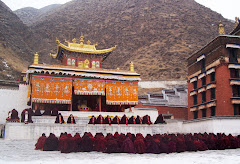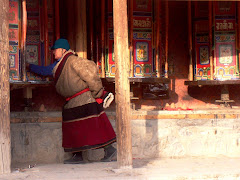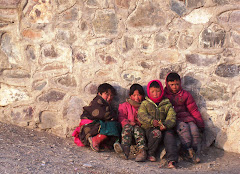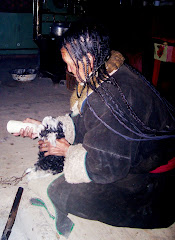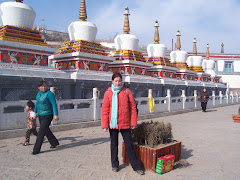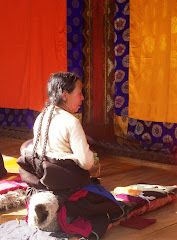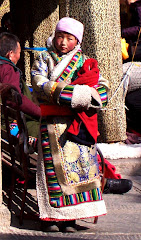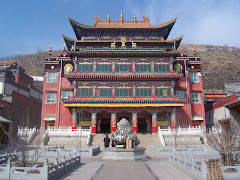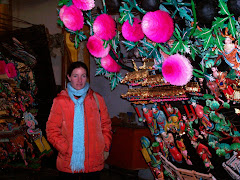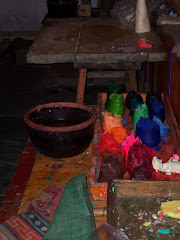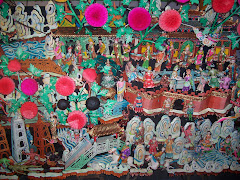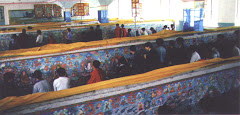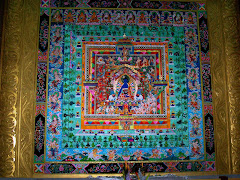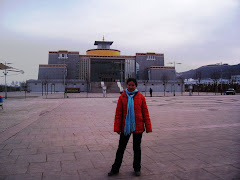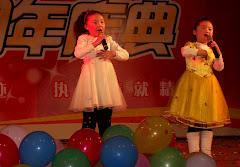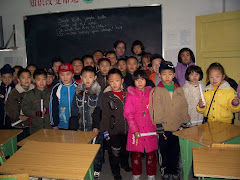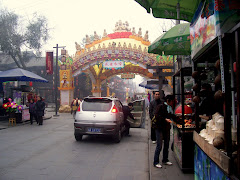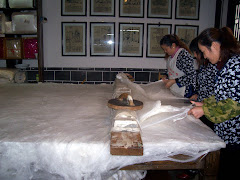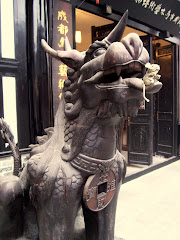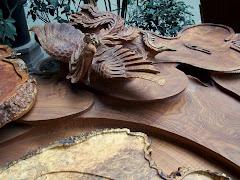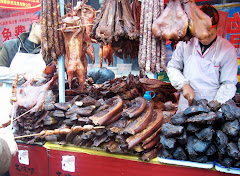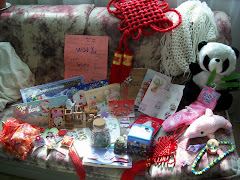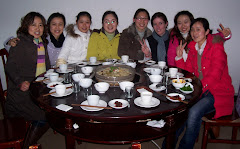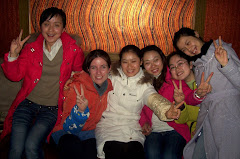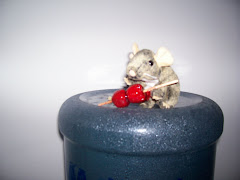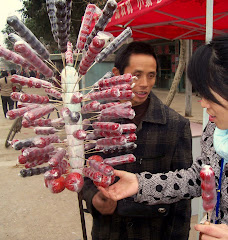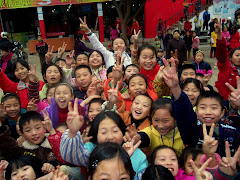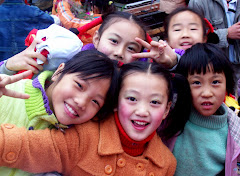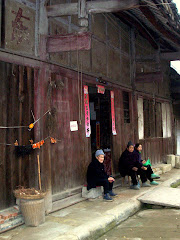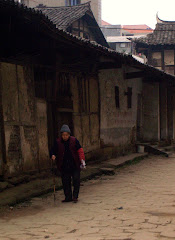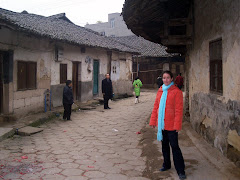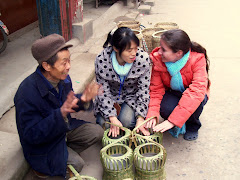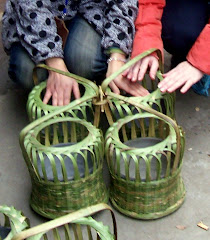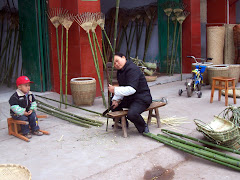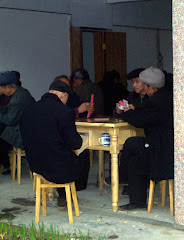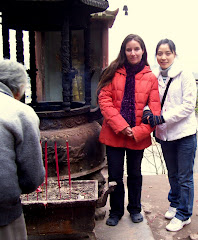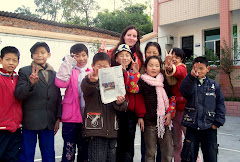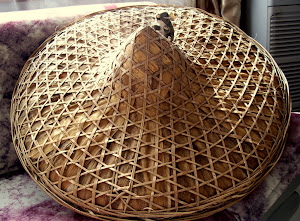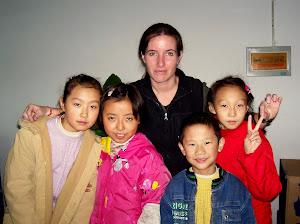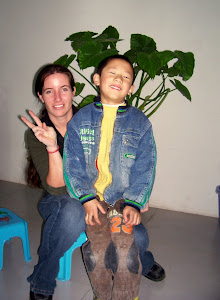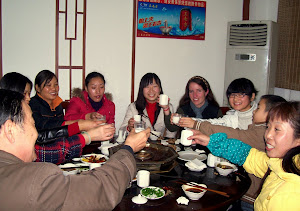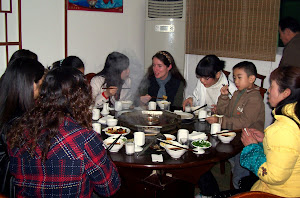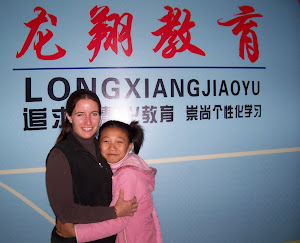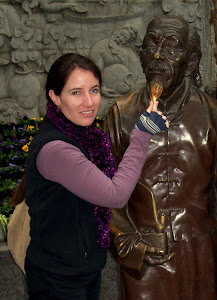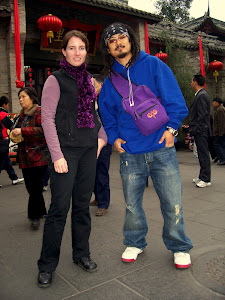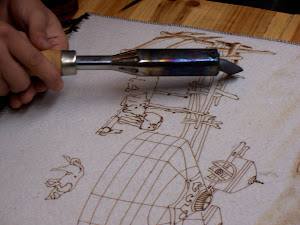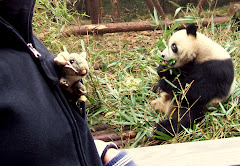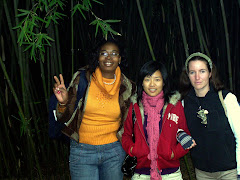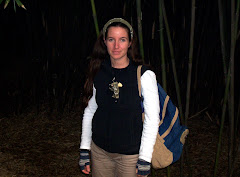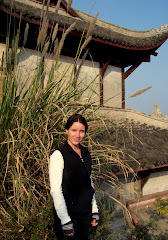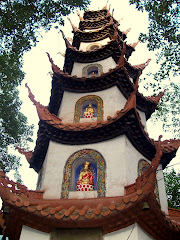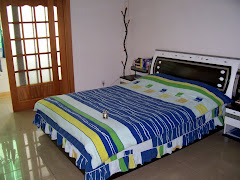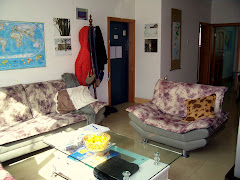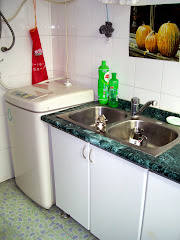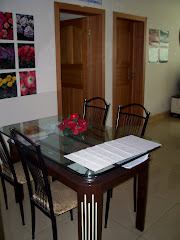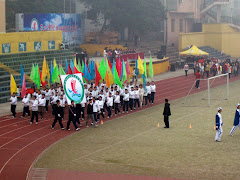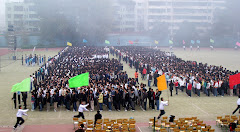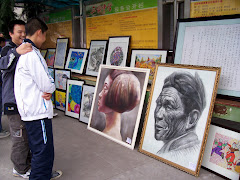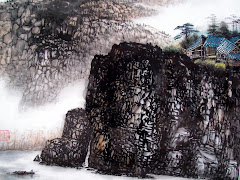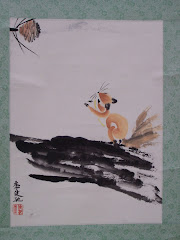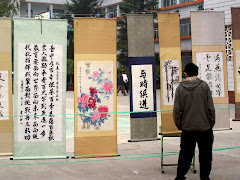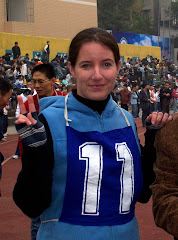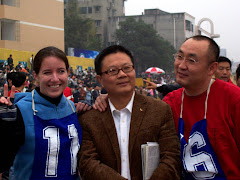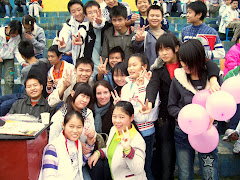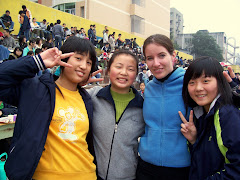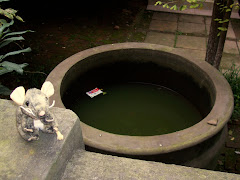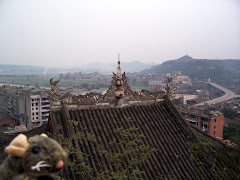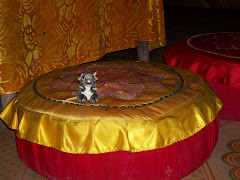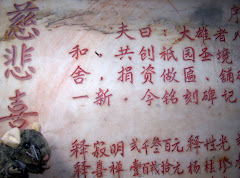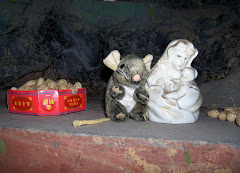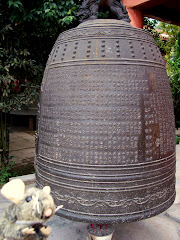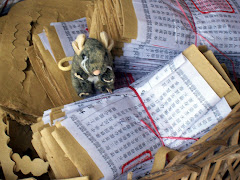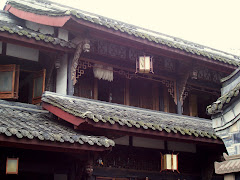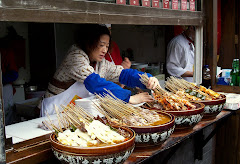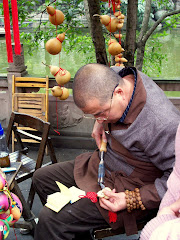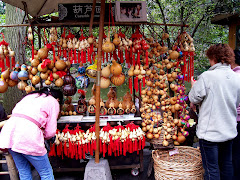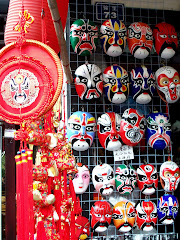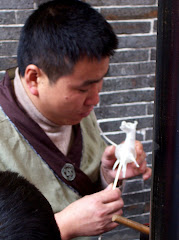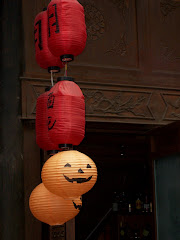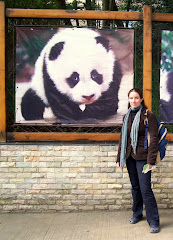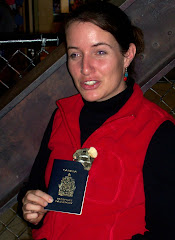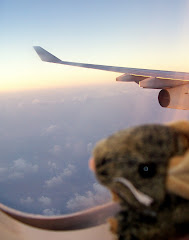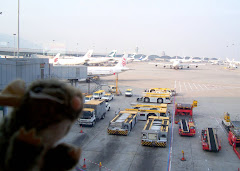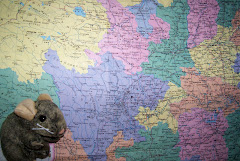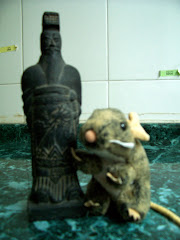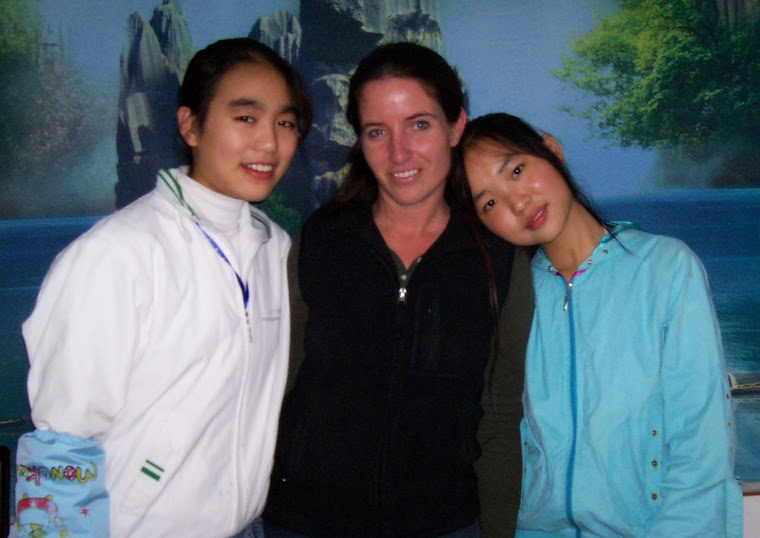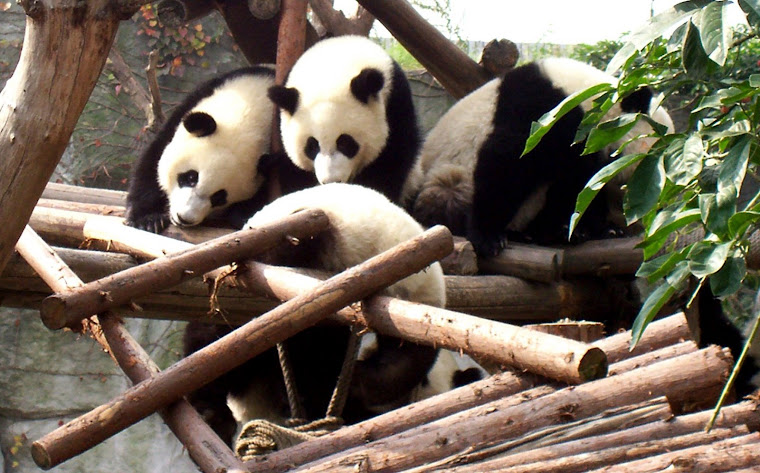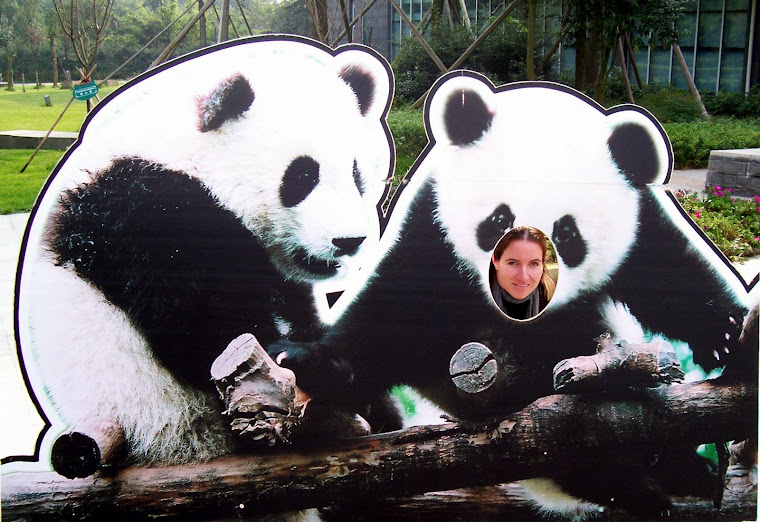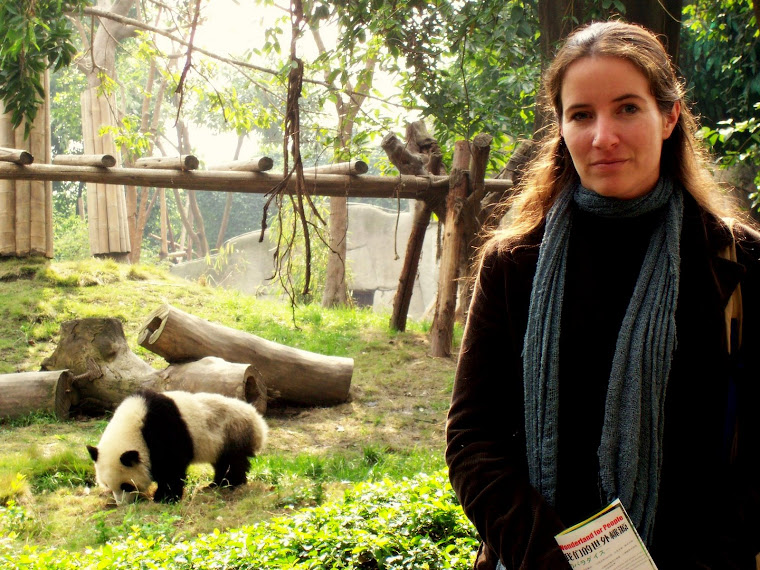Chengdu to Xining
After 2 years spent in Sichuan, waiting for the time and circumstances to be right to move up here, it finally happened this summer. I cheerfully handed in my resignation and the final weeks of my time in Santai were spent packing and shipping off most of my stuff to Xining, and getting ready to head off for a month’s holiday in Laos and Thailand. I had to return in time to begin classes in Xining on July 15th, so crossed the border back into China about 10 days early, so as to make the trip north overland, via Ngawa, Childri and Gabde, stopping to visit friends on the way. Unfortunately, the weather was abysmal, raining or overcast and chilly for most of the time.
Upon arrival in Xining, I stayed with a friend for the first weeks, while looking for a flat to rent near the office. Found one easily enough, but had to wait a few weeks until the two American women students living there moved out.
My Flat
The flat is nice, for the most part. It’s on a quiet lane connecting two bigger roads, and is shaded by willow trees. The apartment complex is actually housing for teachers/staff of the Tibetan Medical College, so all my neighbours either work in the school or are retired. The flat itself is on the ground floor (finally defeating my previous belief that all foreigners living in China had flats on the 5th floor or higher, a fact carefully researched among friends in Sichuan) It has 2 bedrooms, a sitting room a kitchen, entranceway with pantry and sink for washing up and a bathroom complete with hot water heater. The bathroom is the only real source of my complaints…as with most flats in China, the pipes occasionally give off a foul smell. I suspect the drainage systems are not the greatest, especially with so many people using them. So I go through lots of incense and air fresheners. Also, this flat has some great eccentricities. The best one, in my opinion, is that there was a water heater installed for the foreigners (who, oddly enough, seem to insist on taking hot showers…!) however, there’s not actually a drain. So there’s nowhere for the water to go. I purchased a large blue bucket, and now take my showers standing in it, getting out once or twice to dump the accumulated water down the toilet! Ah well, at least there is hot water, and plenty of it. The second day after I’d moved in, however, a vast lake of water suddenly appeared in the entranceway, and flowed into my bedroom as well. This fortunately was not from the toilet, but from the pipes leading down to the sewers from the sinks. Something down in the pipe below the building was blocked apparently, and as people on the higher floors used their sinks the water, having no other place to go, overflowed into my flat. When one doesn’t speak Chinese, it makes it exceedingly difficult to communicate in a hurry. A monk friend was staying with me at the time, and his Chinese was not much better than mine. Nevertheless, he dashed off to try to find a plumber of some description, while I went upstairs banging on doors, telling the half awake people who opened the doors “Water, water (one of the few words I know in Chinese!) and making wild gestures to attempt to convey the fact that my flat was flooded and please for them not to use their sinks. After some baffled looks, they finally seemed to understand, and I went back down to mop up the inches deep water. This happened for two days in a row, and I have to admit the novelty and amusement factor wore off rather quickly. However, the problem was remedied eventually by means of opening the manhole cover opposite the flat, and poking around with a long stick. Nothing like technology to solve one’s difficulties.
Walking to work:
My flat is near the office, only a 20-25 minute walk, which I do each morning and evening. Now that winter has set in in earnest, I bundle myself up against the biting wind, and stride off purposefully down the little road outside the compound gates, take my life in my hands to cross two main roads, and Xining Square. Crossing the Square is always entertaining, as the Chinese health freaks are all out in force, despite the bitter wind. There are kite-flyers, birdsellers, others walking energetically backwards and yet others who stand and shout into the wind ( to exercise the lungs?) There are also a few old men who carry buckets of water and large paintbrushes on poles and painstakingly write poetry in Chinese calligraphy in water on the stone slabs in the center of the square. As well, there are several groups that meet to do calisthenics cum line dancing to the music blaring from huge amps on trolleys. The fashion sense of these fitness addicts leaves something to be desired however. I myself am not exactly a walking fashion plate, but at least my colours tend to match, and I have never in my life tried to do jumping jacks in high heels. Never. Mind you, the women seem to live in high heels, despite the risk to life and limb. A few days ago there was a couple inches of wet snow on the ground, and the beautiful, but treacherous fired red clay tiles used to decorate the sidewalks, are a death-wish when it either rains or snows. I was wearing my clunky black shoes with treads, and finding it hard not to fall flat on my face, and these women were picking and wobbling their way in heels? Just one more thing I really don’t understand…But I digress. In addition to the aerobics groups, there are the sword dancers, and the tai chi practitioners, the occasional jogger, and the grandparents hauling wailing children off to school.
Another unique thing about this country is the road construction. This seems to be a permanent fixture in the city. When I arrived, the road was under construction, all piles of sticky mud and blocked off for traffic and leaving dirty passageways for intrepid pedestrians to make their way through the mess. Potholes were left uncovered, so you need to walk along with eyes glued to the ground, lest you vanish into the sewers of Xining, never to be seen again. Apparently, this was in aid of water pipes or some such thing. Finally, the surface was patched together, carefully repaved with the addition of the aforementioned dangerous red tiles, and we all breathed a sigh of relief. This last just over two weeks. Then the sidewalk was torn up –again- so a pretty garden strip complete with picket fence (which requires daily polishing to remove the layers of grime) could be added. Grass was planted, flowers and shrubs put in, and the whole thing was lovely once complete. For another 2 weeks. THEN all the carefully planted grass was dug up again to do something connected with the electricity poles. I am waiting with bated breath to see what will be dug up next and why…at least it’s one way to keep the population employed, but surely it’s a rather expensive option? What about the villages that don’t have proper garbage disposal, sewers or electricity?
Trace and teaching
Teaching the staff of Trace NGO is about as different as it could possibly be from teaching in the Chinese highschool in Sichuan. For a start, My largest class here is 9, as apposed to about 100 in Santai. I find that as a teacher it is a good thing if you can actually see the students at the back of the classroom. Also, the students here are really interested in learning. And I mean learning, not just passing exams. Obviously they need the language skills for their job, but these students even ask for extra work…unheard of! The students are divided into 3 classes, advanced, intermediate and beginner.
The beginner class is the drivers, and they are seriously fun to teach. They’re progressing in leaps and bounds, especially in speaking.
The intermediate class has also improved remarkably, especially considering that I only teach three days a week Wednesday - Friday. In that class, we’re working on pronunciation and speaking as well as grammar and writing skills. This class too is fun, and we laugh a lot, always a good sign.
The largest class is the advanced group, with 9 students. This lot has learned a lot of grammar, and mostly needs work on finessing writing skills, and in speaking/pronunciation. In this class, we study topics rather than grammar units. I began with a section on Michael Jackson, as he had conveniently just died around that time. I showed a few of his videos, and we discussed his life and the controversy surrounding him. We decided that most of the decisions he had made in life were to try to escape his background, and that he’d not really been successful at least not emotionally. We also discussed changing one’s appearance, how and why one would do so. From there, we moved on to Martin Luther King’s life, comparing how the two men had dealt with issues that shaped their lives, in what ways they were similar, and how different. I copied the I Have a Dream speech, dividing it into sections and assigned each to a student, asking them to “teach” the class their part. We discussed Rosa Parks, racism, discrimination and segregation, and I made a powerpoint showing photos of MLK’s life and the segregation in the USA. From that, we moved on to the history of slavery, and I showed another powerpoint of pics showing the slave ships and the situation of slaves in the southern states. Next we studied the Underground Railroad, and each student was assigned a person who’d been involved, such as Frederick Douglass and Harriet Tubman, to research, and write an essay on. As summary of the unit on racial discrimination, I showed the movie “To Kill A Mockingbird” after giving the students a page synopsis and questions to be discussed afterwards. They really enjoyed that, and as a result, we’ve started a monthly movie night. Last night was the first of these. The students came to my place on Friday evening, and we watched “The Kite Runner”, again after me first giving them a paper with plot summary and questions to be discussed. The next subject is Obama, as a sort of result of years of fighting discrimination. We looked at his life, and discussed the ongoing controversy regarding his being awarded the Nobel Peace Prize. We looked at the conditions of the prize, world reaction and talked about whether he ought to give it back or not. We will be discussing his views on issues, in particular Iraq and Afghanistan. From that, I plan to move on to discrimination by the Taliban, and from there to RAWA and women’s treatment/rights…It’s interesting to teach this class, as I have to do a lot of research myself in order to prepare.
Friends
One of the nicest things about the move here, is having so many friends nearby and passing through. Padma Reypa stayed with me for about a month when I first got the flat, then Choezin spent a couple weeks, and Gedun Lekshey came by for a few days. The gate guards, however were less than impressed that suddenly lots of monks were turning up in the flat compound. Monks and foreigners are both “sensitive” here, so both together are a recipe for disaster apparently. So I no longer have monk guests, but catch the bus down to the Tibetan market near the bus station to hang out with them when they come. Still, I manage to meet lots of friends here, and those not in the monk or foreigner categories come to visit me often.
As well, living in Xining means travelling to visit friends isn’t the mission it used to be when I had to travel north from Chengdu. When Padma Reypa was here, we went on a trip to Labrang, Repgong and Wendu. I also went to Henan to see the horse racing/archery festival and to visit friends and I’m plotting several more trips to see friends in the next weeks, weather permitting.
Projects and plans…
Now that I’m here, I can finally get to work on several of the projects I’ve been wanting to start for the last couple years. First is the art book. This is to be, if all goes well, the first of a series of four. The one I’m working on now is a book to teach how to draw realistic style portraits and people. It is to be all black and white, and written in Tibetan, Chinese and English. The plan is to have it published in January, and the last weeks have been a mad rush of trying to get all the drawings done, the text written and translated, and with trips to the printers to discuss paper, format and price. The idea is to start with printing 5000 books, and then go from there. Now that the deadline is drawing nearer, it is getting exciting, and scary… Dependent on the success of this first one, we plan to do next a book teaching how to draw animals, the third landscape, and the fourth and final book on perspective and drawing buildings.
Project number two, related and semi-dependant on project 1 is to start a small art school. This is rather more complex…but the general plan is to teach Tibetan, western and Chinese art styles. The main focus is to be on thangka painting, with 3 days a week devoted to that, then three mornings for western art and the remaining three afternoons for traditional Chinese painting. Students who complete the course, will be trained in all three styles, and as such, should have no trouble at all in finding work. This is important, as so many students complete school and then can’t find a job. Hopefully this will help at least a few to find viable careers and a way to earn for their futures. This project is very dependant on external factors, however, especially the political climate, so it is on hold until after March next year to see how things evolve.
Just to keep myself from getting bored, or ending up with free time of any flavour, I also am hoping to write another phrase book, as a step up from the first one, which has been really popular and has sold over 50,000 copies between India and Tibet. I have some changes in mind that I’d like to make, stuff I want to add/delete…
Hanging out with the clever people…
In October, I was invited to attend a 2-day conference of famous Tibetan scholars: authors, teachers, musicians and university headmasters. The topic was preservation of culture, and it was fascinating to listen to a gathering of great minds, most of whom are involved in various projects of their own to maintain their language and cultural roots discuss changes and options. I was the only foreigner present, and as such attracted attention. I was able to discuss my own plans with several of these people: Khenpo Tsultrim Lode, Rabgya Jigme Gyaltsen, Tulku Hunkor Dorje, Aku Lobsang, Tibetan author/teacher at Rabgya school. One of the best things about the conference was the evening informal get-togethers where people interested in similar projects met for tea/dinner to carry on talk and exchange contact information. Through this I was able and lucky to meet some very influential members of the Tibetan erudite community.
Writing all this, I am realizing how much has happened since arriving here, and how much I’ve not written. Typical, is it not, that when I had lots of time to write, I didn’t have much to write about. Now that so much is happening, and inevitably, it all seems to be happening at once, I can’t keep up. So for those of you who have been suffering through all the epics, be comforted that they will at least be abbreviated from now on!
Wednesday, November 18, 2009
Subscribe to:
Comments (Atom)
